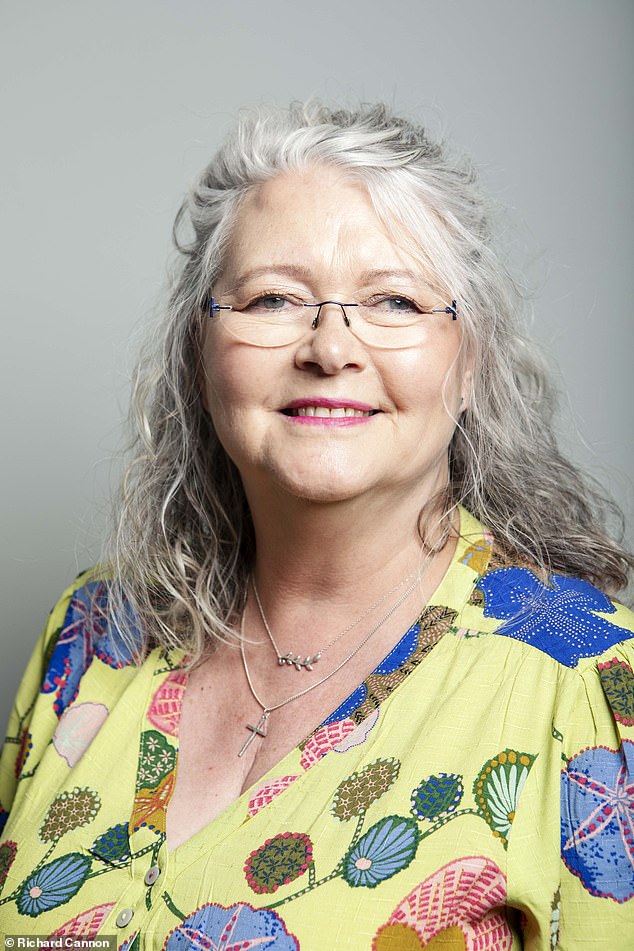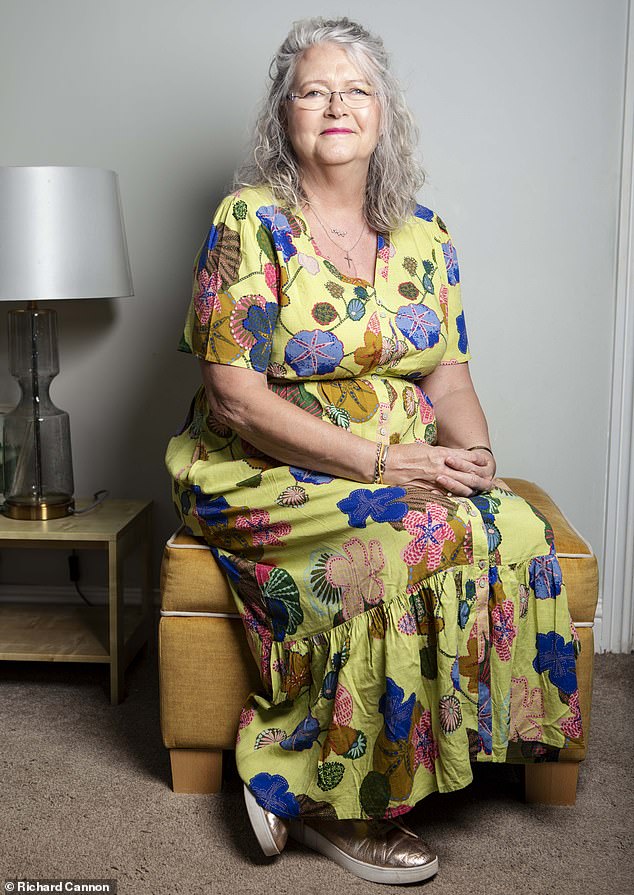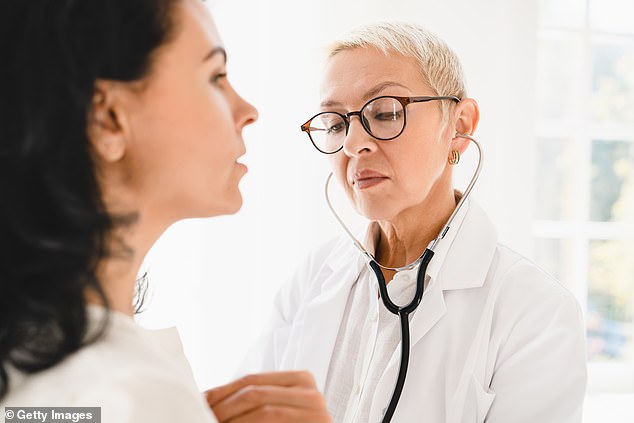Jacqueline Lewis used to power through the brisk ten-minute uphill walk that was part of her daily commute. But three years ago she noticed she was getting breathless even on flat ground.
Within weeks, the mother-of-two from Slough – previously a fan of running and yoga – struggled even to walk and talk on her phone at the same time.
Deeply concerned, she went to her GP. But the doctor – who didn’t even listen to her chest – told her it was probably ‘just stress’.
‘It was early summer 2022 and I’d recently lost my mum, whom I’d been caring for,’ says Jacqueline, 62, who was then working as director of ethics and compliance at a large pharmaceutical company. ‘So I thought things were just getting on top of me – but it just got worse and worse.’
Yet, over repeat visits to her GP – and later to an NHS cardiologist – Jacqueline continued to be dismissed.
‘I was even told at one point that it could be the menopause, which was ridiculous, as I’d had a hysterectomy at the age of 46, which I swiftly pointed out,’ she recalls. ‘There was also a suggestion I had asthma.’
In fact, Jacqueline had heart valve disease, where one or more of the heart’s four valves don’t open or close as they should, impairing blood flow. The serious condition affects around 1.5million people in the UK and is more common in women than men (56 per cent to 44 per cent).
Left untreated, it can ultimately lead to fatal heart failure because it affects the heart’s ability to pump blood effectively.

Jacqueline Lewis, 62, had undiagnosed heart valve disease – only found after a stethoscope was used
Jacqueline believes her condition was missed because, as a woman, she didn’t fit the stereotype of a ‘classic’ heart patient.
Certainly, the data supports her view. In one of the largest studies of its kind, presented at the British Cardiovascular Society conference in Manchester last month, researchers at the University of Leicester identified nearly 155,000 people diagnosed with aortic stenosis (the most common form of heart valve disease, affecting the valve which connects to the aorta, the largest artery in the body) between 2000 and 2022.
But women with the condition were 11 per cent less likely to be referred by their GP for specialist care than men.
Women were also less likely to receive treatment for aortic stenosis: although more than half of heart valve disease cases occur in women, fewer than half of procedures to replace or repair the damaged valve are carried out on them.
The five-year survival rate for severe aortic stenosis is almost ten times lower than that of breast cancer as women are often diagnosed later – and with more advanced disease.
So why are women slipping through the net? The reasons are both clinical and cultural, according to Dr Clare Appleby, a consultant cardiologist at Liverpool Heart and Chest Hospital and honorary secretary of the British Cardiovascular Intervention Society.
‘Some of it stems from gender bias in general practice, and the misconception that heart issues are inherently male,’ she explains, adding that clinical trials often exclude women or include too few, which leads to gaps in knowledge.
‘Diagnostic criteria themselves can be flawed, as thresholds and measurements for diagnosing heart valve disease are based on male anatomy,’ she says.

Jacqueline says, ‘I’ve got five grandchildren I love running around with, but suddenly I had to just sit and watch, helpless’
For instance, calcium build-up on the valve – a key marker for heart valve disease, usually identified from a scan – is typically lower in women even when they have the disease, and so their condition may be overlooked or misinterpreted.
‘By contrast men are seen, diagnosed and treated more quickly,’ says Dr Appleby.
Wil Woan, chief executive of the charity Heart Valve Voice, adds: ‘I’ve spoken to many female patients – and relatives of women who sadly died before they could receive treatment – whose symptoms were missed,’ he says.
‘For many, it was put down to menopause, panic attacks, stress or just “getting older”.’
The charity is calling for urgent action to tackle gender inequality in heart valve disease. It wants to raise awareness of the symptoms to look for, see the box below, alongside better training for healthcare professionals.
Warning signs for heart valve problems
Symptoms can include:
Shortness of breathFeeling tired or weakFeeling dizzyHeart palpitations, where you suddenly feel your heart beating irregularly or faster than usualSwollen ankles and feetChest pain or discomfort <!- – ad: https://mads.dailymail.co.uk/v8/us/health/none/article/other/mpu_factbox.html?id=mpu_factbox_1 – ->
Advertisement
It also wants to see more women in cardiology, as research suggests female heart patients often have better outcomes when treated by women.
When Jacqueline first saw her GP, a simple stethoscope exam could have picked up the telltale sounds of valve disease – a characteristic ‘murmur’ or ‘click-murmur’.
Yet over repeat visits, no one listened to Jacqueline’s chest. Even when she was eventually referred to her local hospital and had a series of tests, including an angiogram – where a dye is injected into the bloodstream and picked up on a scan to show how blood flows through the heart, but doesn’t pick up heart valve disease – this still wasn’t done.
‘We have a real problem with auscultation – the use of a stethoscope,’ says Dr Appleby.
‘Stethoscopes are cheap and widely available, yet they’re often not used because they seem to have gone out of fashion. We need huge education efforts in both primary and secondary care.
‘Any woman presenting with fatigue or breathlessness should have their heart listened to. Other red flags include dizziness and blackouts. These should all prompt immediate investigation.’
Timely diagnosis matters, she adds, because in the early stages the condition can sometimes be managed with medication and lifestyle changes.
However, ‘when diagnosis is delayed, the window for effective intervention narrows – leading to riskier procedures [such as complex surgery] or missed chances for life-saving treatment altogether,’ she says.
Discharged by the hospital cardiologists, Jacqueline’s symptoms worsened – with crushing fatigue and continued breathlessness. (Chest pain on exertion can also occur as heart valve disease progresses, as the heart has to work harder.)
‘I thought I was going crazy – all the joy was being sucked out of life,’ she recalls.
‘I’ve got five grandchildren I love running around with, but suddenly I had to just sit and watch, helpless.’
By September 2023, Jacqueline felt so ill she took time off from her job. After five months, in March 2024, she decided to pay for a private consultation at a local clinic.
‘It was the best £200 I’ve ever spent,’ she says now.
Straight away, the doctor listened to her heart and suspected aortic stenosis. Further tests at another hospital confirmed the diagnosis and Jacqueline was told she would need open-heart surgery.
‘I couldn’t believe it,’ says Jacqueline, who lives with her partner Simon, 61, a builder.

Women with aortic stenosis – the most common form of heart valve disease – were 11 per cent less likely to be referred by their GP for specialist care than men

Straight away, the doctor listened to Jacqueline’s heart and suspected aortic stenosis
‘It sounded incredibly serious and dramatic. But I was feeling so rotten and I just wanted to get better. I was also so relieved I was being taken seriously.’
It emerged Jacqueline had been born with a bicuspid valve, where the valve has two leaflets, or flaps, instead of three.
This can in some cases cause heart valve disease in later life (though some people born with it may never know – or it may only become an issue with age).
Jacqueline underwent surgery to replace the damaged valve with an artificial one on the NHS in June 2024.
She woke the next day in pain, with a 7in scar from below her neckline to her breastbone, but was able to get out of bed. By the time she left hospital five days later, her breathlessness had gone.
Jacqueline recalls: ‘When I got home, I walked slowly around the garden – looking at the flowers, the chickens I keep, just amazed at how wonderful it was not to feel breathless.’
It took three months before she could walk at her usual pace, and she still can’t do yoga because she aches around her breastbone due to the surgery.
But as she rebuilds her strength, Jacqueline is supporting Heart Valve Voice in its call for better treatment of women.
‘I was dismissed by the GP and then a hospital doctor because they looked at who I was, not what I might have,’ she says.
‘In their minds, I was just the classic menopausal woman. I was lucky in that I went to see someone privately who knew what to do. Not everyone may have that good fortune.
‘There needs to be a change in attitude amongst health professionals. But I also urge women to speak up so they don’t suffer.’
